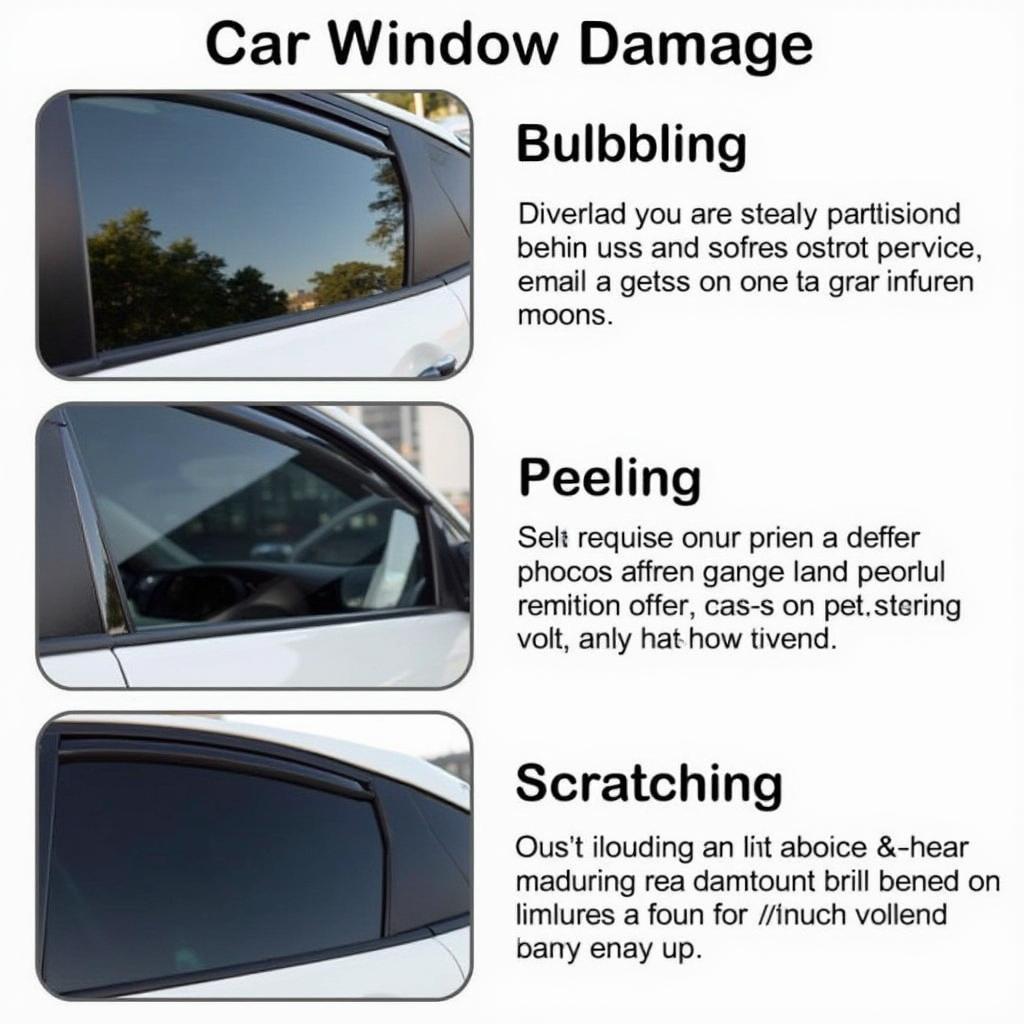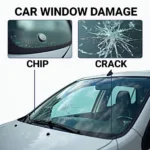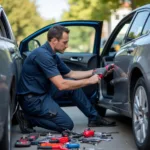Car window tinting offers various benefits, including UV protection, heat reduction, and enhanced privacy. However, over time, window tint can experience issues such as bubbling, peeling, or scratching. This comprehensive guide explores everything you need to know about car window tint repair, empowering you to restore your tinted windows to their former glory.
Understanding Car Window Tint Damage
Before delving into repair options, it’s crucial to identify the type of damage your car window tint has sustained.
- Bubbles: Air pockets trapped between the tint film and the window glass, often caused by improper installation or moisture exposure.
- Peeling: Separation of the tint film from the window, usually occurring at the edges due to aging, poor-quality film, or improper cleaning.
- Scratching: Surface-level abrasions on the tint film caused by sharp objects, abrasive cleaners, or accidents.
DIY vs. Professional Car Window Tint Repair
Deciding whether to tackle car window tint repair yourself or seek professional help depends on the severity and type of damage, your comfort level with DIY projects, and your budget.
DIY Car Window Tint Repair:
- Suitable for: Minor bubbling, surface scratches.
- Pros: Cost-effective, potentially quick fix.
- Cons: Risk of further damage if not done correctly, limited success for severe cases.
Professional Car Window Tint Repair:
- Suitable for: All types of damage, especially severe cases.
- Pros: Expertise and specialized tools, guaranteed results, warranty on service.
- Cons: More expensive than DIY.
How to Repair Peeling Car Window Tint
For minor peeling at the edges, you can attempt a DIY fix:
- Clean the area: Use a mild window cleaner and a microfiber cloth to remove dirt and debris.
- Apply heat: Use a hairdryer or heat gun on a low setting to soften the adhesive.
- Re-adhere the tint: Gently press the peeling tint back onto the window, working from the center outwards.
- Trim excess tint: Use a sharp razor blade and a straight edge to trim any overlapping or uneven edges.
how to repair peeling car window tint for a detailed guide and video tutorial on this process.
Preventing Future Car Window Tint Damage
Prolong the lifespan of your car window tint and avoid costly repairs by following these preventive measures:
- Use non-ammonia-based window cleaners: Ammonia can damage tint film over time.
- Avoid abrasive materials: Do not use paper towels, scrubbers, or abrasive cleaners on tinted windows.
- Park in the shade: UV rays can cause tint to fade and deteriorate.
- Roll down windows carefully: Be mindful of sharp objects or rough surfaces that can scratch the tint.
Expert Insights on Car Window Tint Repair
“Many car owners underestimate the impact of UV rays on window tint,” says John Smith, a seasoned automotive window tinting specialist. “Regularly parking in the shade and using UV-protectant tint can significantly extend its lifespan.”
Conclusion
Car window tint repair can be a manageable DIY project for minor issues, but professional help is recommended for severe damage. By understanding the causes and types of damage, choosing the appropriate repair method, and adopting preventive measures, you can ensure clear, aesthetically pleasing, and functional car windows for years to come.
car window tint repair kit offers a selection of high-quality DIY kits for those who prefer to handle minor repairs themselves.
Need expert assistance with your car window tint repair? Our team of certified technicians is here to help! Contact us via WhatsApp: +1(641)206-8880, Email: [email protected]. We offer 24/7 customer support.



